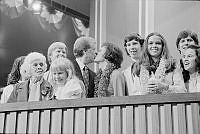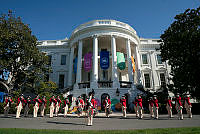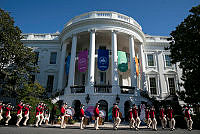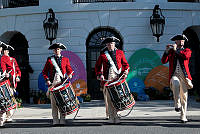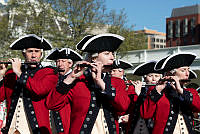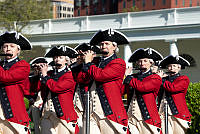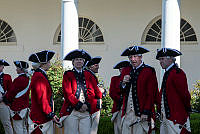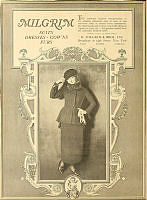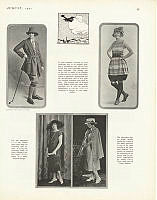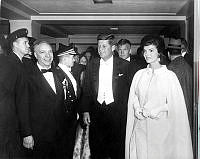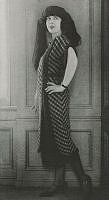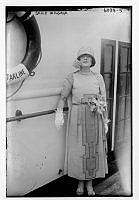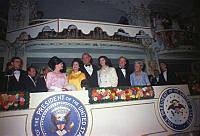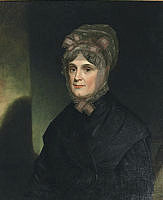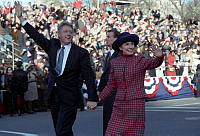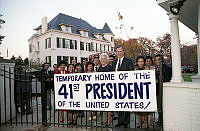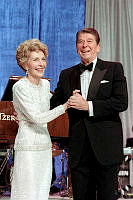
Treasures of the White House: Thomas Jefferson
962.395.1
This compelling likeness of Thomas Jefferson as Vice President, together with the artist's 1795 portrait head of George Washington (Historical Society of Pennsylvania, Philadelphia), is the triumph of Peale's career. He painted both his early masterpieces before study in Paris in 1808–10, which denaturalized his fresh, direct vision and infected his style with a classicizing manner.
The portrait of Jefferson was completed in Philadelphia before mid-May 1800, when he left that capital for Monticello. An engraving of the portrait by Cornelius Tiebout was published on February 20, 1801, less than two weeks before Jefferson became the first President to be inaugurated in the new capital city of Washington. The engraving, widely circulated in the United States and abroad, became the public image of Jefferson the President (1801-09).
Again and again one reads of Jefferson's serenity; this portrait confirms it. As a presentation of the harmonious nature and balanced intellect of the man, it is unequaled. The face has the glow of health, a warm complexion that bespeaks a warm personality. In contrast to the subjects in many early presidential portraits, the sitter here looks directly at us and does so with candor, as our equal. The splendid eyes and mouth convey reason and tolerance. It is an inherently democratic picture and a fitting summation of the century just concluded, the Age of Enlightenment.
But it is equally an announcement of a new age in America's political life. During the John Adams Administration the deep rifts between the Federalists and the Jeffersonian Republicans had taken a bitterly personal turn, and the animosity of the campaign of 1800 was intense. When the election was thrown into the House of Representatives, where it remained deadlocked for 35 ballots, civil war was spoken of. Jefferson's election on February 17, 1801, could not end the turmoil, but Jefferson himself could. It is an easy matter to match the face in this portrait with the sentiment expressed in Jefferson's first inaugural address on March 4, a reasoned and ungrudging reminder that every difference of opinion is not a difference of principle: "We have called by different names brethren of the same principle. We are all Republicans, we are all Federalists. If there be any among us who would wish to dissolve this Union or to change its republican form, let them stand undisturbed as monuments of the safety with which error of opinion may be tolerated where reason is left free to combat it."
Source: William Kloss, et. al., Art in the White House, New York: Abrams, 1992.
- Artist
- Rembrandt Peale
- Medium
- Oil on canvas, 23 1/8 x 19 1/4 inches (58.7 x 48.9 cm)
- Credit
- Gift of Mr. and Mrs. Paul Mellon, 1962













